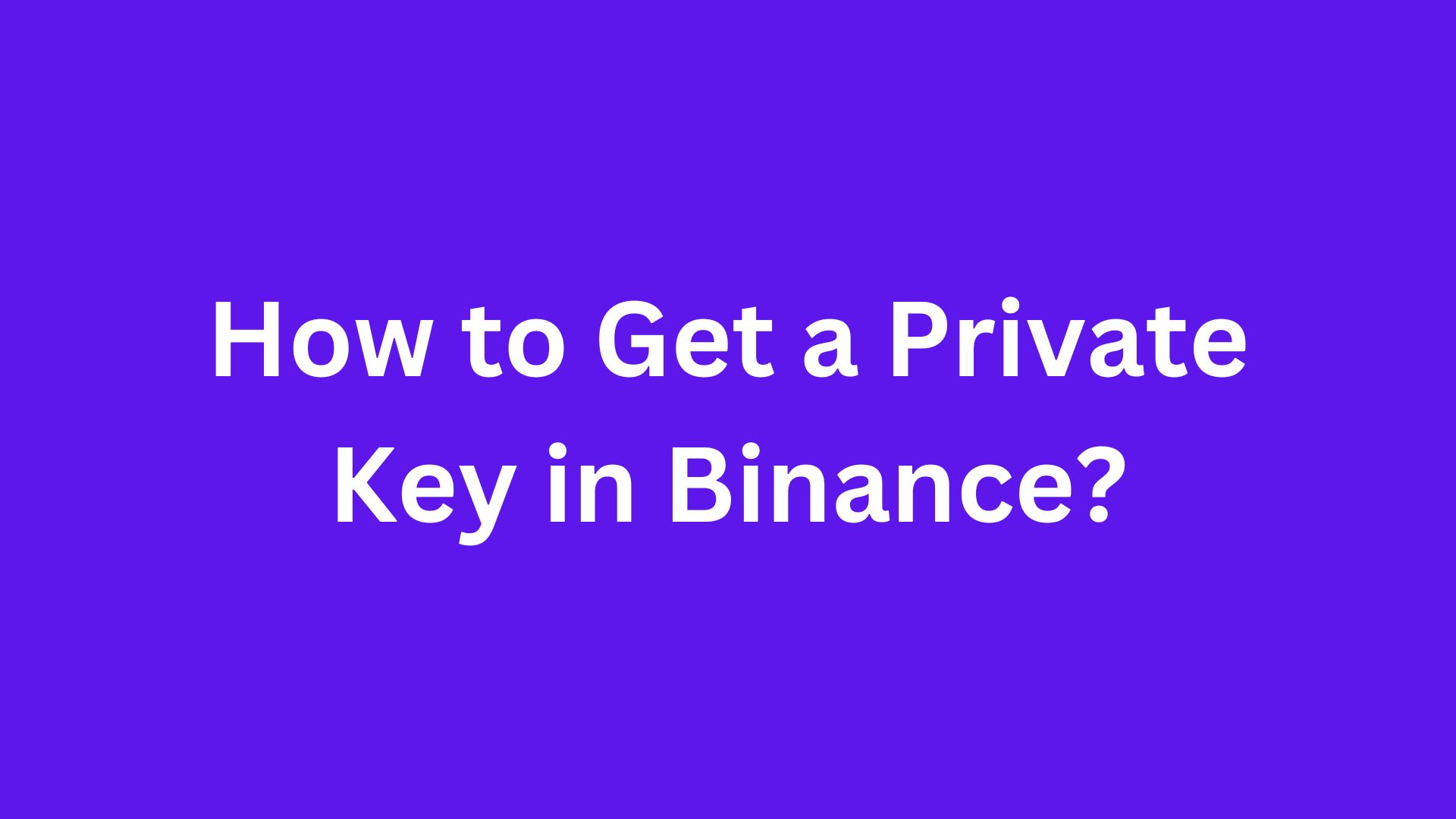Binance is like a starting point for those who are new to cryptocurrency. Keeping your cryptocurrencies safe is important, and one way to do this is to get a private key for your Binance account. We have a simple guide to help you understand and follow the steps for this important security measure.
How to Generate Your Private Key in Binance?
Understanding the Role of Private Keys
Imagine your private key as a super-secret code. This special code lets you do something cool with digital money called crypto transactions. It’s like having your magic pen to write things on a special online book called the blockchain.
So, your private key is like your signature in this online book. Using your magic pen (private key) shows that you’re you, and it lets you get to your digital money. Cool, right? It’s like having a secret key to open a treasure chest full of digital treasures!
Before you generate your own private key, it’s important to understand their role. An individual private key is a secret number that allows the writing of crypto transactions straight to the blockchain. Put your private key acts as your digital signature on the blockchain ledger. This signature verifies your identity and grants you access to your crypto assets.

"Your private key is the golden key to your crypto kingdom – keep it secure at all costs!”
Private Key Generation Process
Unfortunately, Binance doesn’t let users get the private keys for their coins on the platform. Binance is a custodial exchange, which means it holds onto your crypto assets and their private keys. When you use Binance, you’re making transactions with Binance’s permission, not directly on the blockchains. This is a safety measure common in most crypto exchanges. But, you get a private key if you make a Binance Chain Wallet or Binance Smart Chain Wallet.
1. Get Started:
Download and add the Binance Chain Wallet extension to your web browser.
2. Create Your Wallet:
Click the Binance Chain Wallet Icon and choose “Create Wallet.”
3. Set a Strong Password:
Pick a sturdy password and click “Continue.”
4. Secure Your Keystore File:
Download the keystore file and store it safely. This file is vital for unlocking your digital wallet.
5. Backup with Mnemonic Phrase:
Write down the 12-word mnemonic phrase. This is crucial for recovering your wallet if you ever can’t access it.
Great news! You can now access your private key using the keystore file. Just keep in mind that your private key is sensitive information. If it gets into the wrong hands, your funds could be at risk. Stay secure!
How to Store Your Private Key Securely?
Hardware Wallets
A hardware wallet is a special device made for keeping your crypto keys safe. It’s the most secure way to store your private keys because it stays offline, shielding you from online risks. Examples are Ledger and Trezor.
Paper Wallets
A paper wallet is a safe way to store your private keys offline. Simply print out your private key and keep it in a secure place, such as a safety deposit box. While it protects against online threats, be careful to avoid physical damage or misplacement, as that could lead to serious problems.
Metal Wallets
The most robust form of private key storage, metal wallets, quite literally carve your private key into metal, offering protection against water damage, physical decay, and more.
Bonus Tips: Private Key Best Practices
Follow these important rules when handling private keys:
- Backup Safely: Keep a physical and digital backup of your keystore file and mnemonic phrase.
- Keep It Private: Never share your private key with anyone, including Binance.
- Stay Secure: Avoid accessing your private key on a public network or computer.
- Be Proactive: Regularly update and verify your recovery methods to make sure they work properly.
Read Also: CTSKOLA Exchange Review 2024
Conclusion: Be Your Own Bank, But With Care!
Learning how to get a private key in Binance is just the first step. Securing your private keys is the real game. Understanding the importance of private key security is paramount if you choose to venture into the exciting world of digital finance. With great crypto power comes great responsibility, so be sure to follow the tips in this guide to keep your precious crypto assets safe and sound.
The crypto horizon is vast and laden with opportunities, but remember:
“In the crypto world, security isn’t just an option, it’s a necessity!”

